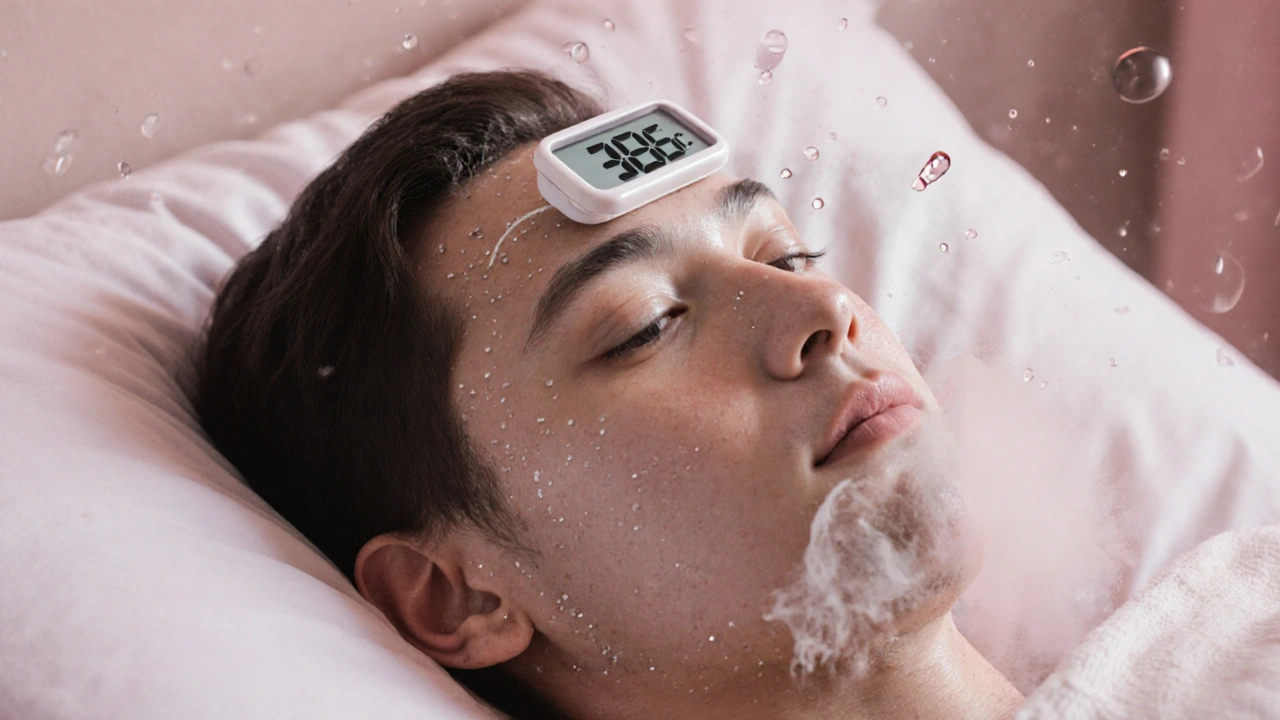
Fever Hydration Calculator
Calculate Your Daily Fluid Needs During Fever
Enter your age group and weight to determine how much fluid you should consume daily to stay hydrated during a fever.
Your Daily Fluid Recommendation
⚠️ Warning: If you're experiencing severe symptoms like persistent vomiting or dizziness, seek medical attention.
When a fever spikes, the body’s water supply can disappear faster than you think. Ignoring that loss isn’t just uncomfortable-it can turn a manageable illness into a dangerous situation. Below you’ll learn exactly how fever and dehydration are linked, what signs to watch for, and practical steps to keep your fluids in check.
What Exactly Is a Fever?
Fever is an elevation of core body temperature above the normal range (typically > 38°C or 100.4°F) that signals the immune system is fighting an infection or inflammation. The heat is intentional: higher temperatures can hinder pathogen replication. However, that same heat makes you sweat, breathe faster, and lose fluids at an accelerated rate.
Understanding Dehydration
Dehydration is a state in which the body loses more water than it takes in, leading to inadequate fluid for normal physiological functions. Even a 2% loss of body water can impair cognition, reduce blood volume, and strain the heart-issues that become critical when a fever is already taxing the system.
How Fever Triggers Dehydration
Three main mechanisms push fluid loss during a fever:
- Increased sweating: The hypothalamus raises skin temperature to cool the body, prompting sweat glands to work overtime.
- Rapid breathing: Fever raises metabolic rate, causing you to breathe faster (hyperventilation) and evaporate moisture from the airway.
- Higher metabolic demand: Every degree Celsius above normal burns about 10% more calories, pulling water from cells to support energy production.
Combined, these factors can bleed off 1-2 liters of water in a single day, especially if you’re not deliberately replenishing fluids.
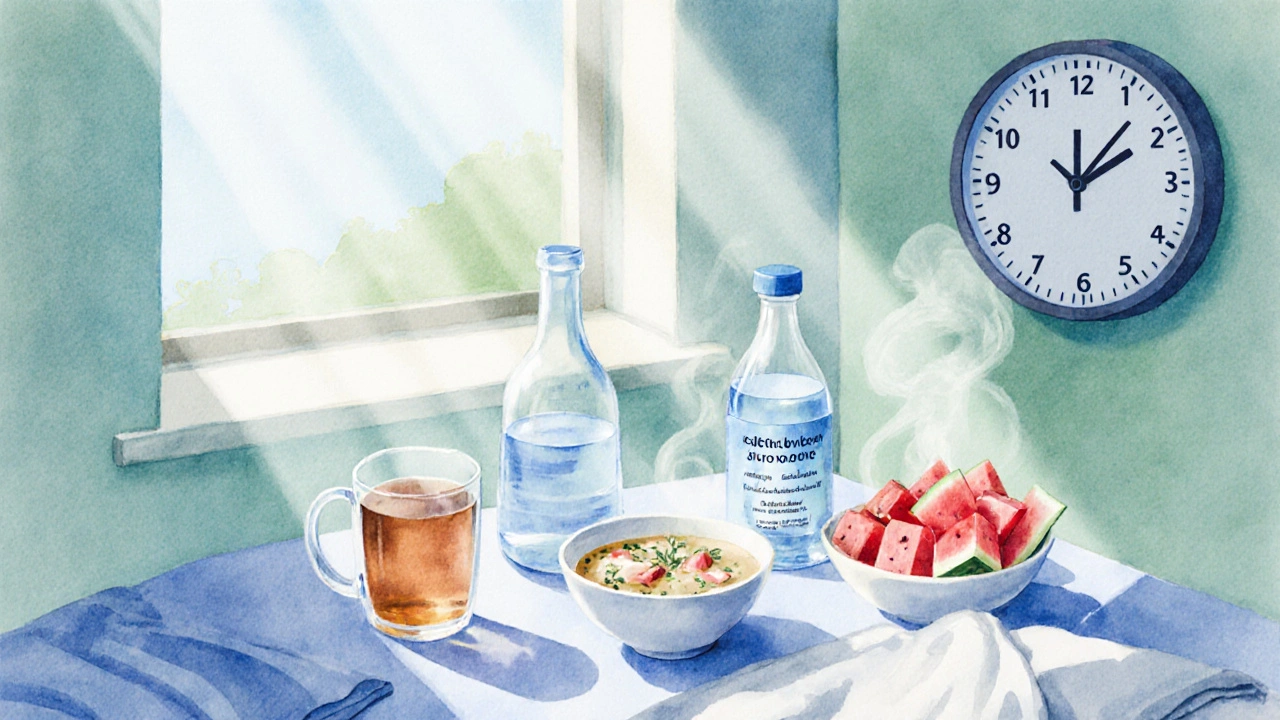
Warning Signs: When Fever Meets Dehydration
Spotting dehydration early can prevent complications. Look for these clues while you’re running a fever:
- Dry mouth, cracked lips, or a sticky feeling on the tongue.
- Dull, throbbing headache that doesn’t improve with pain relievers.
- Dark yellow or amber urine (or a noticeable drop in urination frequency).
- Dizziness, light‑headedness, or a rapid heartbeat.
- Feeling unusually cold or clammy despite a high temperature.
If any of these appear, boost fluid intake right away.
How Much Fluid Should You Drink?
Guidelines vary by age, weight, and activity level, but the following table offers a practical starting point for anyone battling a fever. Adjust upward if you’re sweating heavily or have vomiting/diarrhea.
| Age / Weight | Baseline Needs | Additional Fluid for Fever | Total Suggested |
|---|---|---|---|
| Infants (0‑12mo, ~5kg) | 0.7L | +0.3L | ≈1L |
| Children (1‑12yr, ~20kg) | 1.3L | +0.5L | ≈1.8L |
| Adolescents (13‑18yr, ~60kg) | 2.0L | +0.7L | ≈2.7L |
| Adults (19‑64yr, ~70kg) | 2.5L | +1.0L | ≈3.5L |
| Seniors (65+yr, ~65kg) | 2.0L | +1.0L | ≈3.0L |
These numbers assume a moderate fever (38‑39°C). Higher fevers or concurrent vomiting may require an extra 0.5‑1L beyond the table.
Practical Tips to Stay Hydrated During a Fever
- Sip, don’t gulp: Small, frequent sips reduce the chance of nausea.
- Choose electrolyte‑rich drinks: Oral rehydration solutions, low‑sugar sports drinks, or homemade water‑salt‑sugar mixes replace lost salts.
- Cool fluids work better: Lukewarm water or herbal teas are easier on a sore throat than ice‑cold drinks.
- Mix fluids with food: Soups, stews, and watery fruits (watermelon, oranges) add hydration without feeling like a chore.
- Set a timer: Every hour, aim for at least 250ml (a cup) of fluid, even if you don’t feel thirsty.
- Avoid diuretics: Limit caffeine, alcohol, and very sugary sodas, as they increase urine output.
Special Populations: Children, Elderly, and Athletes
Children have a higher surface‑to‑body‑mass ratio, meaning they lose water faster than adults when feverish. Parents should monitor diaper output or urine frequency and offer fluids before the child asks.
Elderly often experience a blunted sense of thirst, so caregivers must schedule regular drinks, even if the person claims they’re fine.
For athletes, a fever often follows intense training or a marathon. Their muscles already store glycogen with water; a fever can deplete both quickly, so post‑exercise rehydration should include carbohydrate‑electrolyte blends.
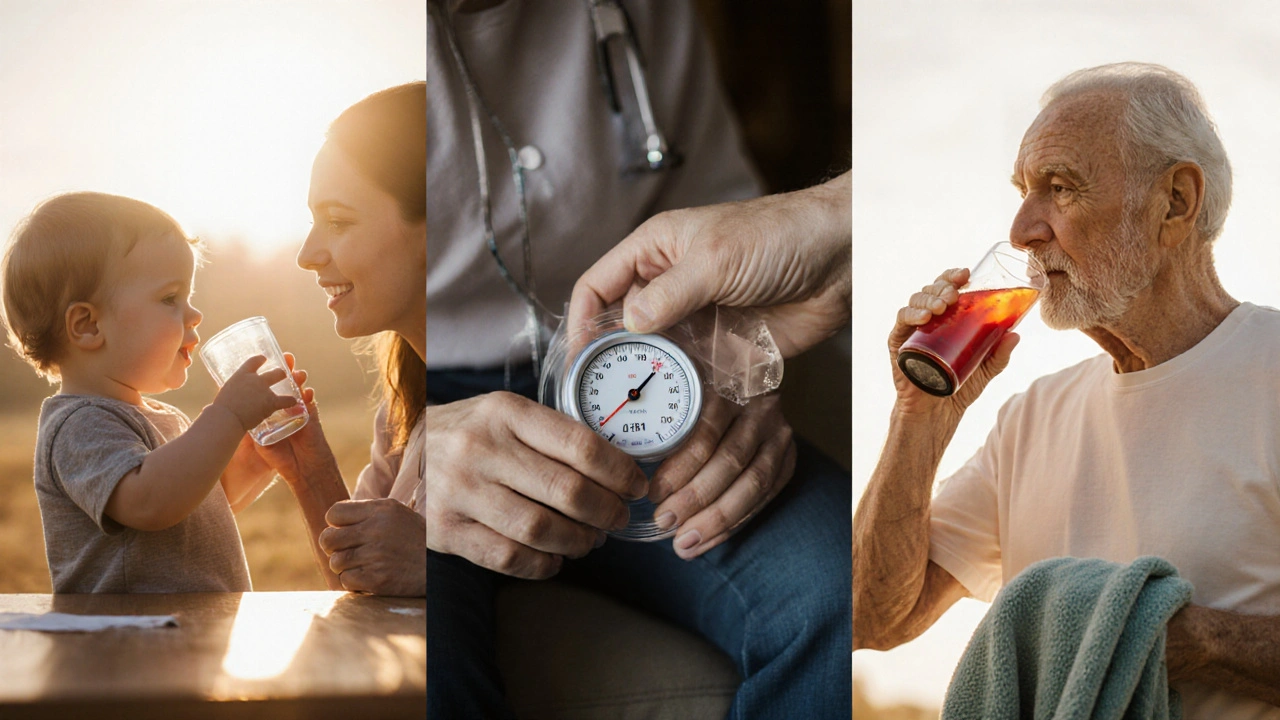
Common Mistakes and How to Avoid Them
- Waiting for thirst: Thirst is a late signal. Hydrate proactively.
- Only drinking water: Pure water replaces fluid but not electrolytes, leading to hyponatremia in severe cases.
- Ignoring urine color: Dark urine is a reliable, quick dehydration check.
- Self‑medicating with diuretics: Over‑the‑counter cold meds often contain caffeine; skip them while you’re feverish.
- Skipping meals: Food provides water; soups, smoothies, and even yogurt add hidden fluids.
When to Seek Professional Help
If any of these occur, call a healthcare provider:
- Fever persists > 3days despite antipyretics.
- Signs of severe dehydration: dizziness, rapid pulse, low blood pressure, or confusion.
- Inability to keep any fluid down for more than 12hours.
- Infants under 3months with a temperature > 38°C.
Early medical intervention can prevent hospitalization and long‑term complications.
Quick Takeaways
- Fever accelerates fluid loss through sweat, breathing, and metabolism.
- Dehydration can worsen fever symptoms and damage vital organs.
- Aim for 1‑2L extra fluid per day for moderate fevers; adjust for age and severity.
- Electrolyte‑rich drinks, soups, and timed sipping are the most effective strategies.
- Watch urine color, mouth dryness, and dizziness-these are early red flags.
Frequently Asked Questions
Can I drink coffee while I have a fever?
Coffee contains caffeine, a mild diuretic that can increase urine output. During a fever you’re already losing water, so it’s best to limit coffee and replace it with water‑based or electrolyte drinks.
Is it safe to give a child sports drinks for hydration?
Yes, as long as the drink is low‑sugar and contains appropriate sodium and potassium levels. Dilute the sports drink 1:1 with water for younger children to avoid excess sugar.
How quickly should I see improvement after increasing fluid intake?
Most people notice reduced headache and clearer urine within 24hours if they consistently meet the recommended fluid targets. Persistent symptoms after that time warrant medical evaluation.
What homemade oral rehydration solution works best?
Mix 1 liter of clean water with 6 teaspoons of sugar and half a teaspoon of table salt. Stir until dissolved. This 3‑1‑2 formula restores both fluids and electrolytes efficiently.
Should I take ibuprofen if I’m dehydrated?
Ibuprofen is generally safe, but it can stress the kidneys when dehydration is severe. If you’re unable to maintain fluid intake, opt for acetaminophen or consult a doctor before using NSAIDs.
7 Comments
Benjie Gillam
October 20, 2025 at 19:50 PM
Here’s the practical side: when you’ve got a fever, aim for at least 250 ml of fluid every hour – that’s about a cup a piece. If you’re feeling a bit queasy, try sipping a electrolyte solution rather than straight water; it’ll keep the salts in balance. And yeah, if you’re not sure how much you need, just check the calculator above – it’ll give you a solid estimate. Definately keep an eye on urine color; dark yellow means you’re laggin behind.
Naresh Sehgal
October 30, 2025 at 15:57 PM
Listen up, you can’t just sit on the couch and wait for your body to miraculously fix the dehydration – that’s lazy. Grab a bottle, set a timer, and drink like you’re training for a marathon, because the fever is already burning calories like crazy. No half‑measures; if you’re sweating, you’re losing electrolytes, so chug that sports drink now. Stop making excuses and hydrate aggressively, or you’ll pay the price later.
Michelle Zhao
November 9, 2025 at 12:03 PM
Whilst the scientific community lauds the virtues of systematic fluid intake, one must also recognise the melodramatic toll a fever exacts upon the psyche. Indeed, the chorus of dry lips and weary throats could be framed as a tragic soliloquy.
Jenae Bauer
November 19, 2025 at 08:10 AM
One might ponder whether the omission of adequate hydration is, in fact, a covert societal experiment, designed to render the masses docile under the pretense of illness. The subtle orchestration of medical advice may be an illusion, a veil over deeper machinations. Yet, regardless of conspiracy, the tangible symptoms – dry mouth, dim vision – are indisputable. Thus, even the most skeptical philosopher must concede the pragmatic need to sip fluids.
vijay sainath
November 29, 2025 at 04:17 AM
Alright, let’s cut the fluff. The data shows a direct correlation between fever intensity and fluid loss – no debate. If you’re not tracking intake, you’re basically inviting renal failure. So stop scrolling memes and start measuring liters. Your kidneys will thank you, or they won’t, but the point stands.
Daisy canales
December 9, 2025 at 00:23 AM
Sure, because dehydration is totally a myth.

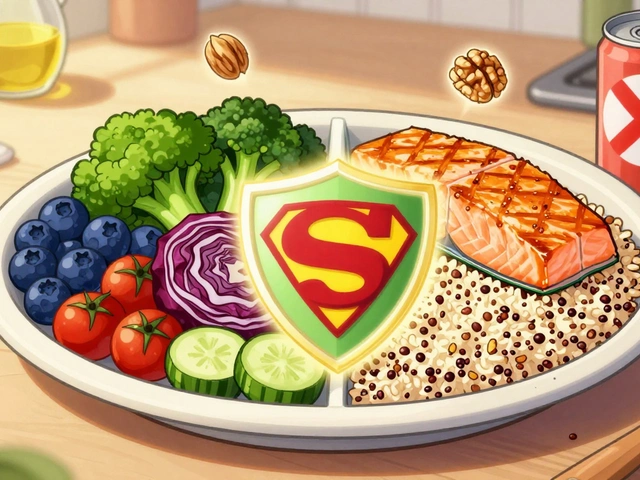
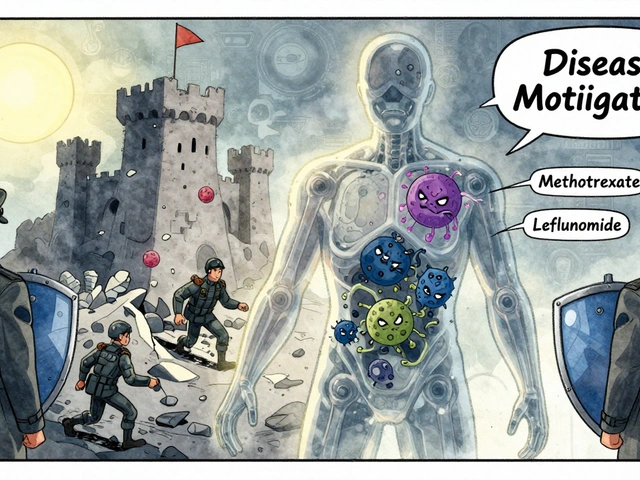
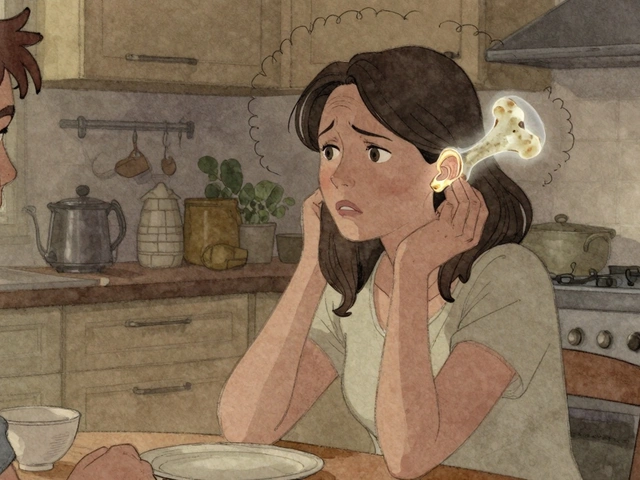
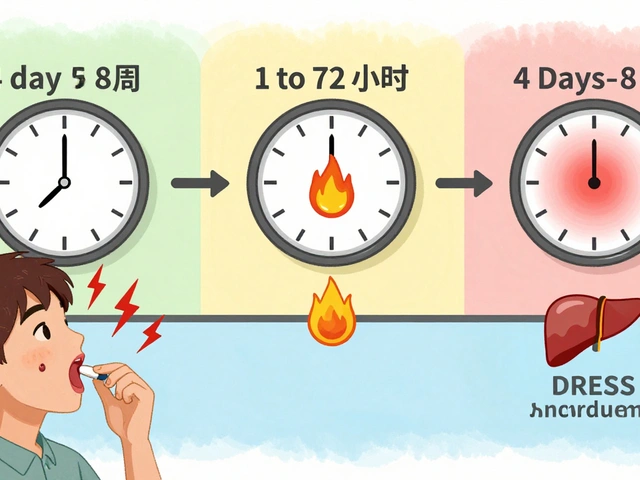
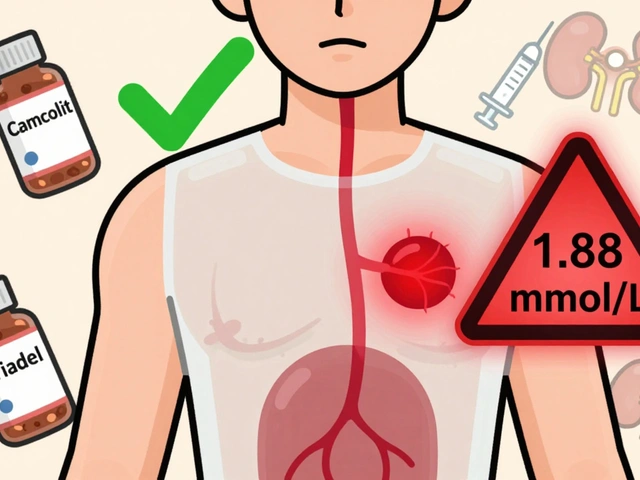
Sydnie Baker
October 10, 2025 at 23:43 PM
Engaging with the thermoregulatory cascade during febrile episodes necessitates a sophisticated appreciation of homeostatic fluid dynamics. The elucidation of osmotic gradients, coupled with the thermic augmentation of metabolic rate, underscores why mere water consumption is epistemologically insufficient. Therefore, one must integrate electrolyte repletion to forestall hyponatremic sequelae, especially when perspiration escalates. In sum, the orchestration of hydration is a paradigmatic exemplar of physiological elegance.